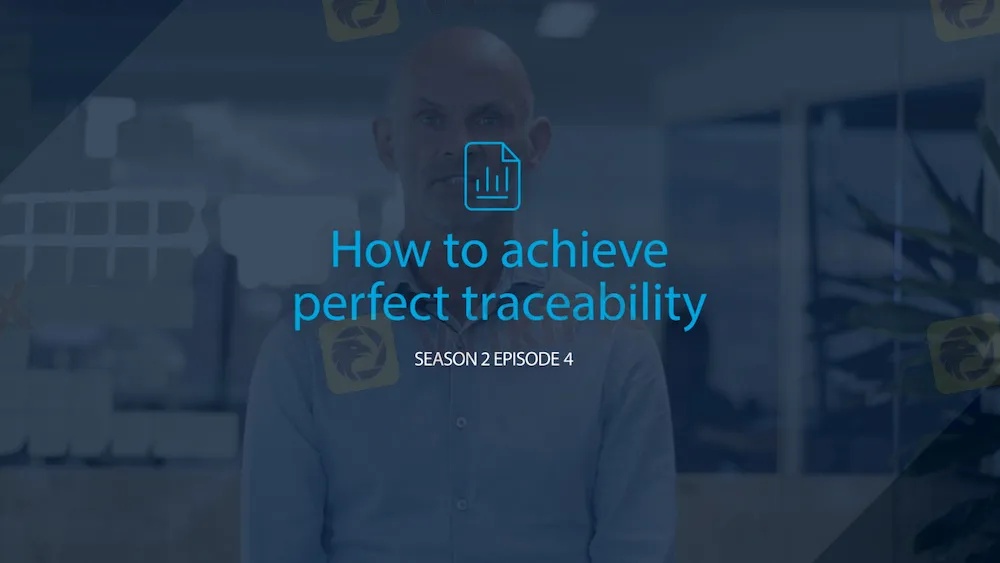WIKIFX REPORT: How to achieve perfect traceability
Abstract:You can't manage it if you can't trace it! In this post, we'll look at a facet of money management that's sometimes ignored yet crucial: traceability. End-to-end traceability improves FX management quality and eliminates wasteful expenses and operational hazards.

When you you can‘t trace it, you can’t manage it! In this article, we will discuss an overlooked but important feature in currency management: traceability. End-to-end traceability enhances the quality of FX management and allows you to remove unnecessary costs and operational risks.
What is traceability?
Depending on the sector, traceability could means many things. From an accounting perspective, traceability is the ability to follow a business transaction back to the originating document. It is a key concept for auditors as they need systems with a high degree of traceability to assist them in verifying the transactions included in financial statements.
Traceability gives you the chance to pinpoint the exact place where something has gone wrong, and to organize product callbacks whenever a pervading fault in a batch is detected. Even more importantly, having certain traceability-related policies in place could give you the chance to avoid product non-conformity that could be traced back to your company.
From the point of view of industrial applications, traceability is about identifying products throughout the supply chain and supporting supply chain visibility. Obviously, this can be a major concern in industries with health or environmental concerns.
Traceability in the context of foreign exchange managementTraceability in the context of foreign exchange management
Now let's see what does traceability mean in the context of foreign currency management? Individual pieces of exposure are known as entries. Entries are grouped into positions. When positions are hedged, they become operations, and they can lead to single or multiple payments.
Traceability is the fact that each element has its own unique reference number in the journey from entry to payment. In addition, payments carry the operation reference within their SWIFT message, allowing funds to be traced throughout the entire payment process.
Whenever a position is hedged, it is possible to trace it back to the original entries, including the exchange rate. Thats what Currency Management Automation does. We call it perfect end-to-end traceability
An overlooked, but essential element in currency management
Let us introduce two examples that allow us to understand the importance of traceability in the context of currency management.
When individual pieces of exposures are aggregated, you may benefit from lower trading costs and perhaps more time for scanning netting opportunities and even savings in terms of forward points if they are not in your favour. But, in the absence of perfect traceability, youd be hard-pressed to calculate your profit margins adequately. It would be quite challenging to determine what purchase corresponds to what sale and at what exchange rate each transaction took place.
In the context of a combination of hedging programs for which you want to apply Hedge Accounting, if the budgeted exposure has been hedged, you still need to process firm sales/purchase orders. But why? This is Because in order to compile the required documentation, you need to trace these hedged items to the corresponding hedging instrument, including its value date and exchange rate. This would be an extremely time-consuming activity in the absence of perfect traceability.
Therefore in summary, Traceability is an important yet somewhat neglected concept. You are unlikely to find many references to traceability in textbooks on FX management. It allows treasurers to drill down to the smallest piece of exposure to obtain the required data granularity.
Read more

Shocking! Trump to Double Tariffs on Canada!
Trump announced a tariff hike on Canadian steel and aluminum to 50%, shaking the markets. The Canadian stock market took a hit, the Canadian dollar plummeted, and U.S. steel and aluminum stocks surged, triggering strong reactions from all sides.

Good News for Nigeria's Stock Market: Big Gains for Investors!
Nigeria’s stock market kicked off the trading week with strong momentum, boosting investor assets by ₦52 billion. Market confidence is high, creating a rare investment boom!

Olymp Trade Review 2025: Is It Safe to Trade With?
Founded in 2014, Olymp Trade has been operating for over a decade, expanding its services and user base considerably, now offering focused trading in fixed-time trades (previously known as binary options in some regions) and Forex. Specifically, Olymp Trade operates two trading modes: fixed-time trades and forex mode. Fixed-time trades refer to trades with predetermined expiration times, where traders predict market movement directions. Payouts typically range from 70-90% of the investment amount. Forex Mode is a more traditional forex trading approach with variable leverage (up to 1:500 for experienced traders). At the same time, it allows for more sophisticated trading strategies with customisable take-profit and stop-loss orders.

Gold Trading Insights: Prepare for Moves Above $2,900 Post-CPI
Gain gold trading insights as US CPI nears. Will $2,900 hold or break? Prepare with tariff and geopolitical factors in focus.
WikiFX Broker
Latest News
Beware: Online Share Buying Scam Costs 2,791,780 PHP in Losses
5 things I wish someone could have told me before I chose a forex broker
Unmasking a RM24 Million Forex Scam in Malaysia
U.S., Germany, and Finland Shut Down Garantex Over Money Laundering Allegations
What Impact on Investors as Oil Prices Decline?
Gold Prices Fluctuate: What Really Determines Their Value?
Dollar Under Fire—Is More Decline Ahead?
Plunging Oil Prices Spark Market Fears
Celebrate Ramadan 2025 with WelTrade & YAMarkets
WikiFX App Version 3.6.4 Release Announcement
Rate Calc

